A personal history of climate change art in 5 moments
FF have been making work which is -in some way- about climate change or climate action for fifteen years now. So here’s a very personal history of my journey with climate change art, in five moments.
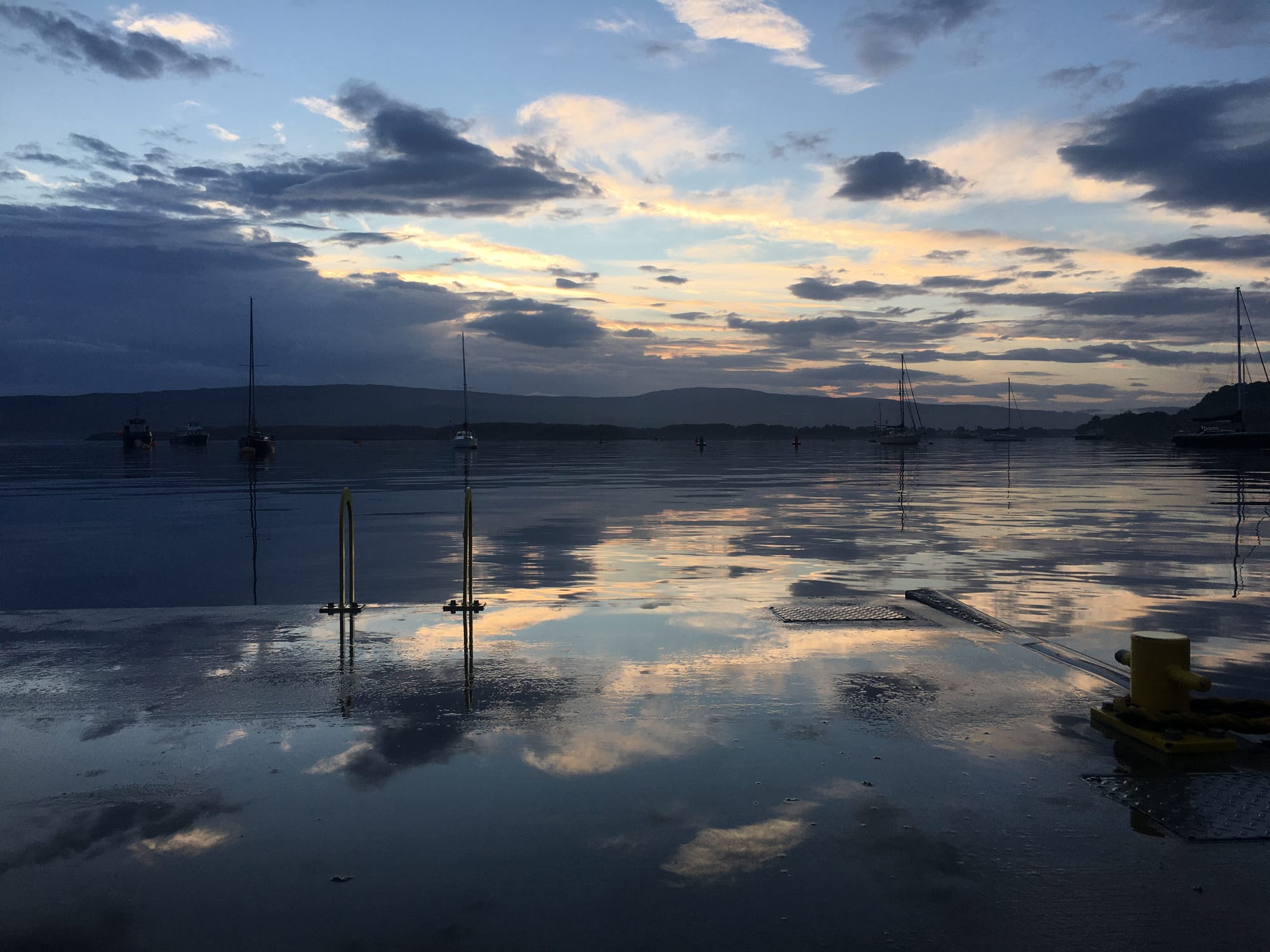
FF have been making work which is -in some way- about climate change or climate action for fifteen years now. So here’s a very personal history of my journey with climate change art, in five moments.
1. Tipping Point conference, Newcastle
Back in 2012, climate change wasn’t yet a mainstream arts concern, so for us, it felt risky starting to make a devised outdoor show about it rather than sticking to our previous on-trend ‘new writing’ projects, which had sometimes been ‘about’ climate change but not in the way our work would become. The new project, GreenandPleasantLand, was a departure from everything we’d done before; this overview of climate change theatre in 2013 (unearthed from the Tipping Point website) is a reminder of how dominated by ‘new writing’ climate-focused work was.
That Tipping Point event -held in Newcastle, which felt like an adventure in itself for a young and non-conference-fatigued me- was about bringing artists and scientists together, for artists to understand what they should be communicating in their artworks about climate change (that was where the discourse was at). I was thrilled, it felt like we’d been granted admission to an exclusive club, worthy of this knowledge.
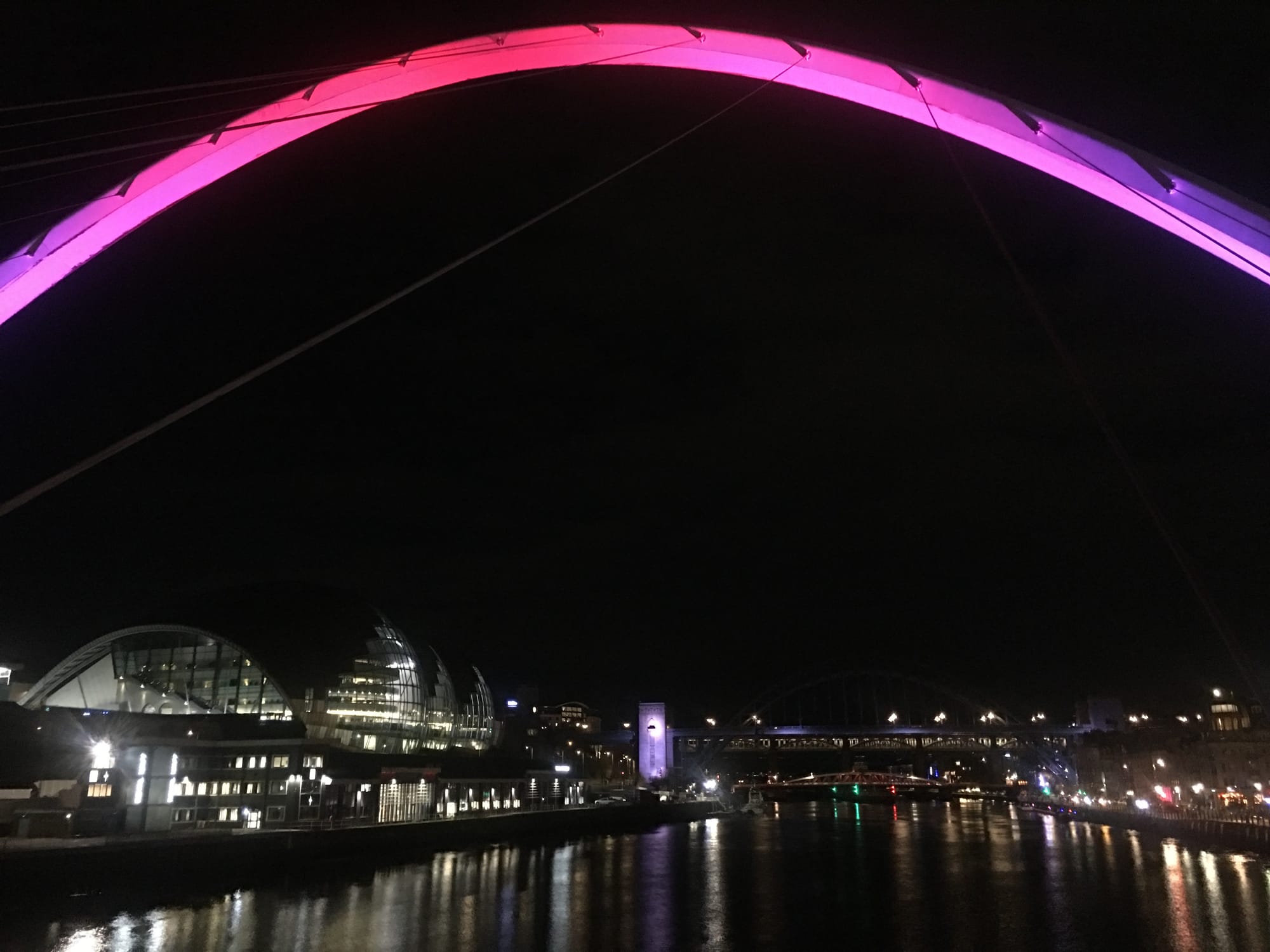
On the first afternoon, there was a ‘discussion’ between leading climate scientist Kevin Anderson, who’d given up flying and using his central heating because of climate change, and Matt Ridley, a journalist for right wing publications, often writing about why manmade climate change wasn’t a thing. They basically shouted at each other for an hour. It was the big ticket event in the Tipping Point programme and it left me feeling utterly paralysed. I didn’t feel I knew enough to have the confidence to shout at anyone about it. I didn’t really want to either. I wasn’t the only person who hadn’t loved the discussion, I remember someone else describing it as ‘a cockfight between two massive egos.’ But if this was what taking action on climate change demanded, then I didn’t have it.
The next morning started slowly, with the audience thinner on the ground and more the worse for wear. A man in his sixties with an accordion and a woman of a similar age prepared to lead some kind of sing-along. I suppressed the urge to roll my eyes, it felt like a cliche of the environmental movement. Surely what we needed was science and robust debate.
But when we started singing All Things Bright and Beautiful, everything changed. The atmosphere in the room no longer felt like the air had disappeared. It was almost like with the pressure taken off by this unifying act of singing, people could actually encounter each other. I don’t know if it was during the singing or shortly after that I realised the two people leading it were John Fox and Sue Gill, founders of Welfare State International (among other initiatives) and true legends of the outdoor and community arts scene. I’d been reading about their work, and we’d planned the making process for GreenandPleasantLand in a series of residencies, including at their former base in Barrow-in-Furness. I felt overwhelmed, but in a different way to the effect of the cockfight the previous day. Singing felt like connecting with the amazing legacy of work that had been engaging with its environment for years, like being part of something bigger.
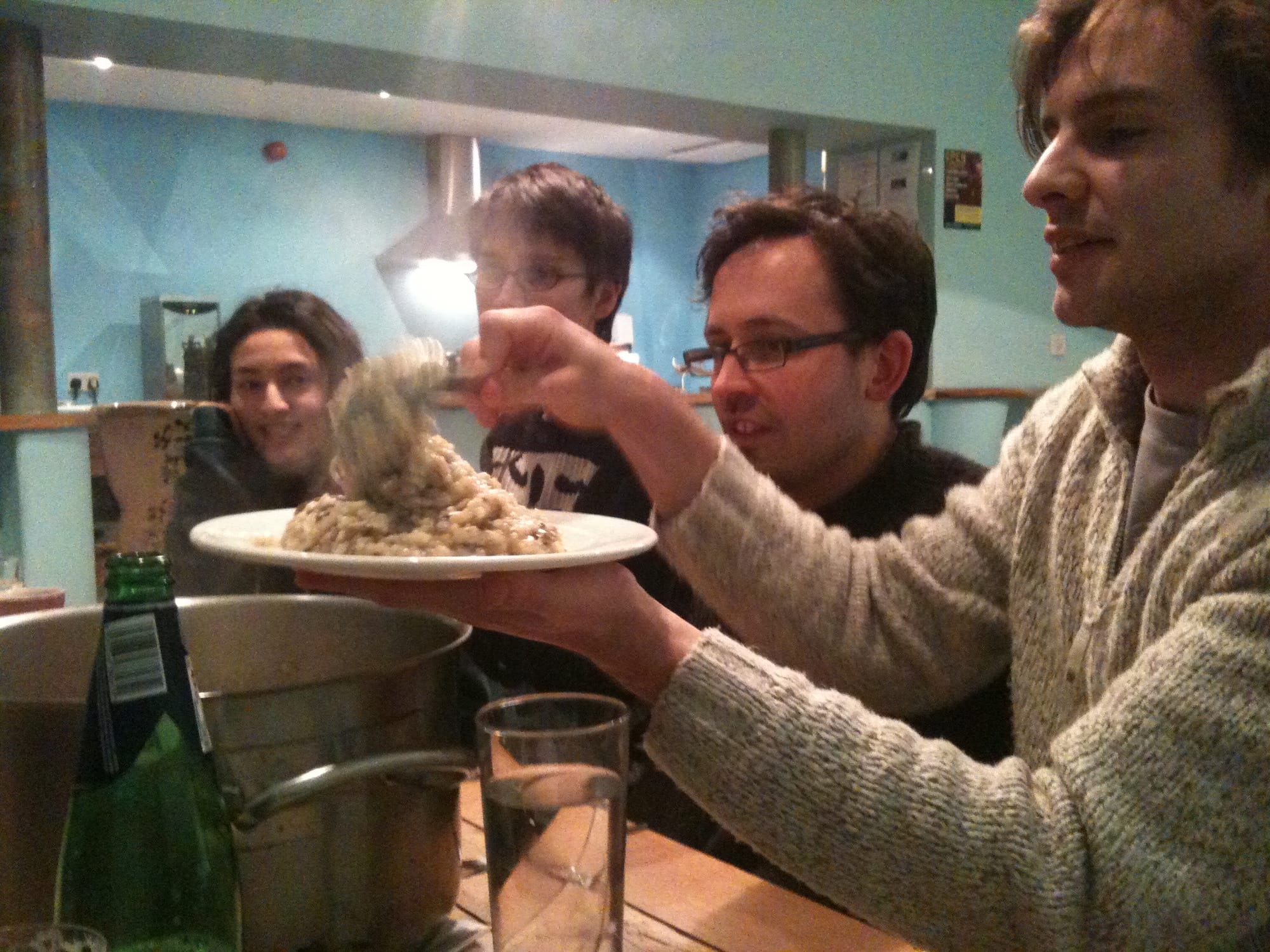
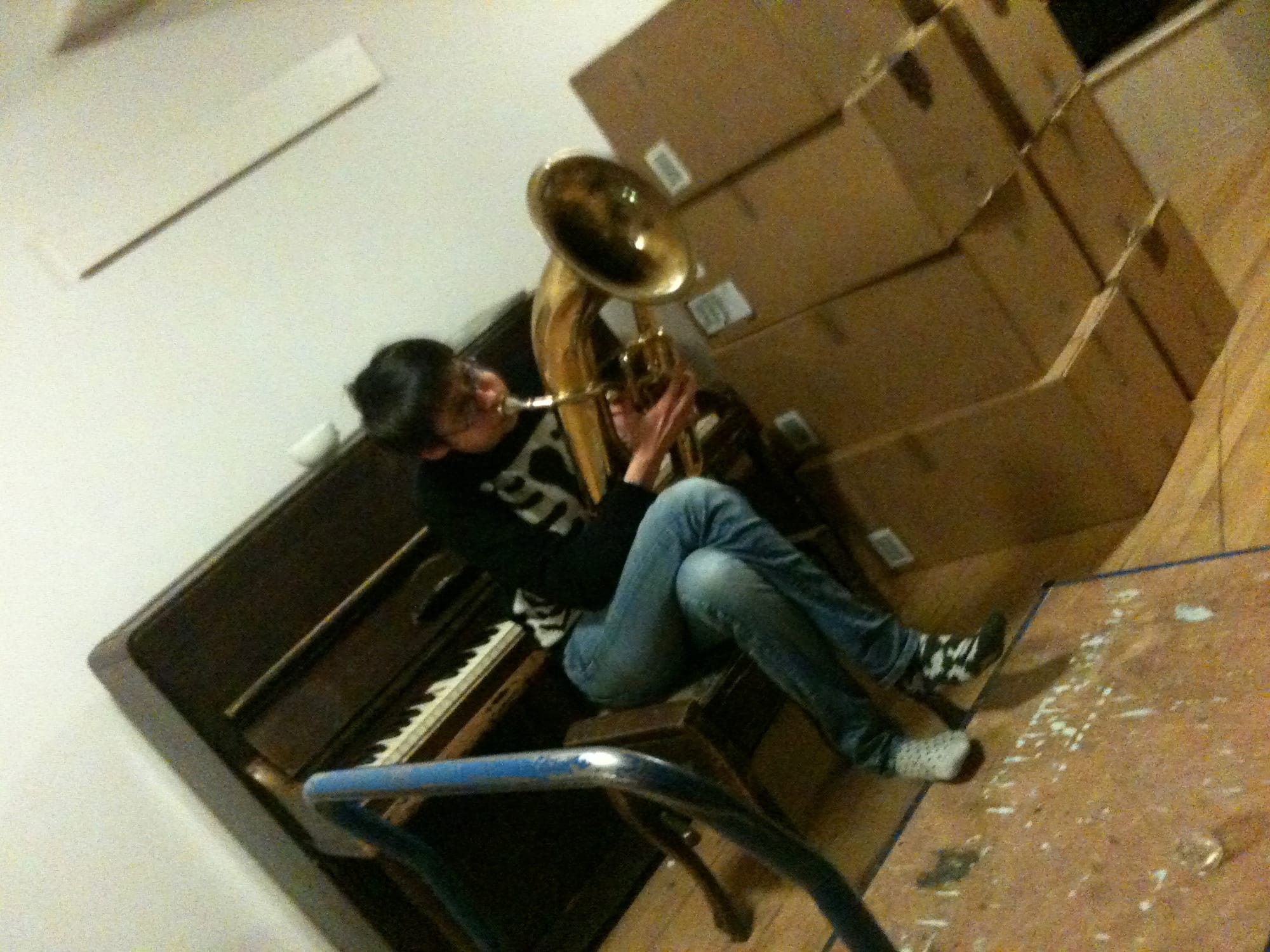
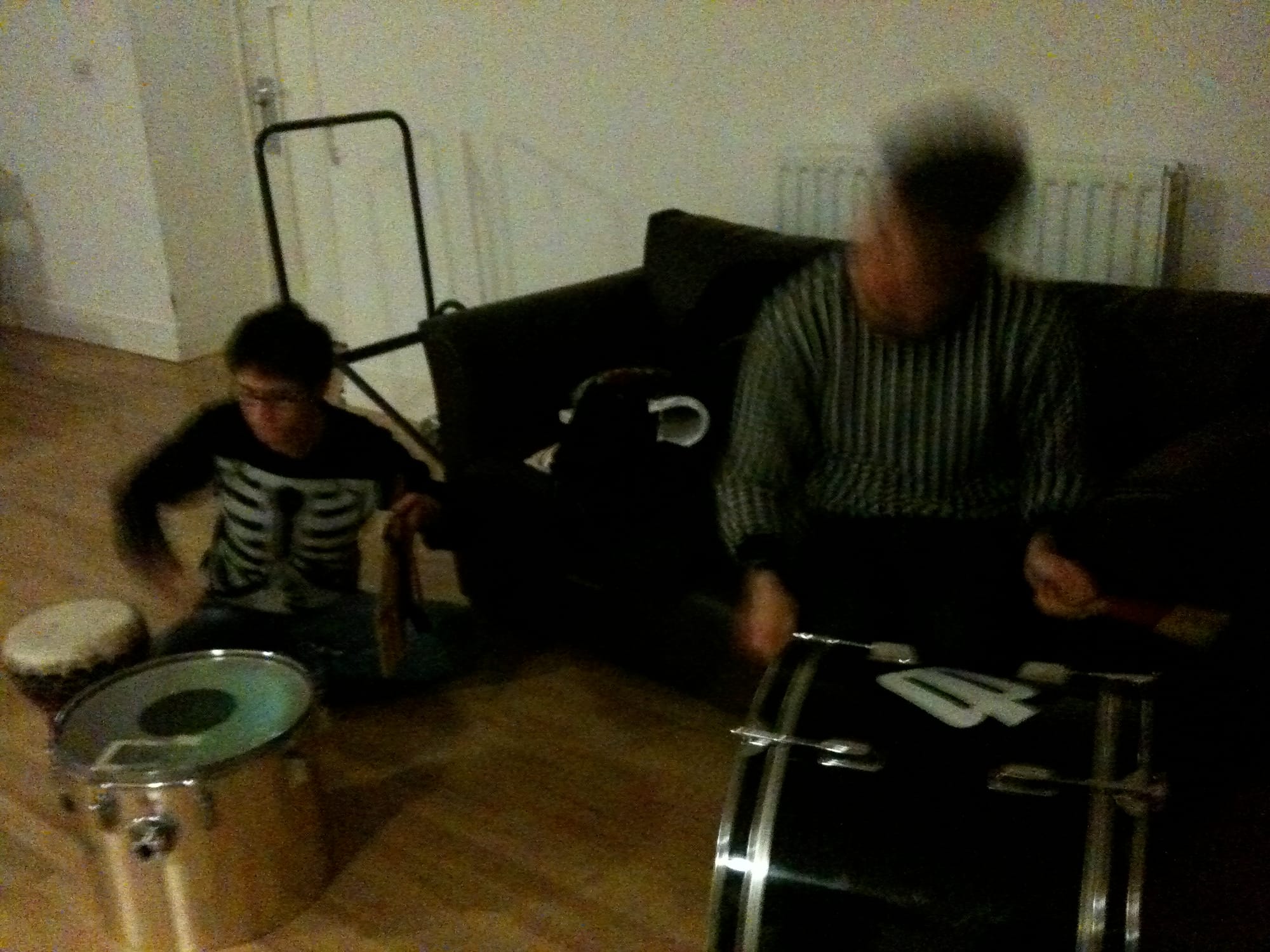
Pics from the Lanternhouse residency. We mostly seem to be eating or playing musical instruments in badly lit rooms. Good times.
I don’t know what kind of show GreenandPleasantLand would have been if we’d left after the Kevin Anderson/ Matt Ridley showdown. I thought I was at Tipping Point to hang out with the ‘big kids’ and find out more about the science. I didn’t know that I was looking for community. Tipping Point was a turning point, but not in the way I’d expected. So often it’s not about information deficit, it’s about finding a place to belong.
2. As the World Tipped
In summer 2012, we toured GreenandPleasantLand to outdoor festivals and events, travelling by train and powering the music for the show with a bicycle generator. The project was an early case study for Julie’s Bicycle, who were fast establishing themselves as climate advisors to the cultural sector. There was another ‘climate show’ touring at the same time, and I HATED it beyond measure.
As the World Tipped was a large-scale outdoor arts show, which is great for programmers of festivals (many of which are free and extremely well-attended) because it means that lots of people can watch at once. A bit like fireworks. GreenandPleasantLand was a small-scale narrative show, which meant small audiences - less popular with programmers, who also took some convincing that audiences would stick around for 40 mins of narrative. (They did. And often came back the next day to watch again. Once having made t-shirts with the protagonist’s name on.) So maybe you should read the following knowing that I may have a teeny-tiny axe to grind here.
The marketing copy for As the World Tipped describes it like this:
This ambitious and extraordinary piece of aerial theatre tells a powerful tale of ecological crisis.
Combining dramatic video visuals with breath-taking aerial performance, As The World Tipped confronts one of the most pressing issues for the planet with spectacle, humour and emotion.
At the Secretariat of the Copenhagen Climate Change conference, harassed staff fail to notice as the world around them, literally and metaphorically, slides toward disaster. Suspended above the audience in the night sky, the performers struggle to control their increasingly precarious world as they do battle with the effects of drastic environmental catastrophe.
My take on it is this:
There is a stage. People in officewear walk around on it, giving each other files and other bits of paper. They are bumbling and inefficient. The stage begins to tip. Paper and people slide off it. Once vertical, the stage acts as a large projection screen. Onto the screen are projected images of natural disasters, acts of damage to the earth and symbols of modern life, like computers. The performers are suspended in front of the screen, sometimes interacting with it (one performer carries the ‘lifeless’ body of another to the edge of a cliff in a burnout The Road-style hellscape) but always powerless in the face of the relentless horror. At the end, the message ‘ACT NOW’ is projected on the screen.
I now have the vocabulary and understanding to confidently articulate why this is a terrible bit of climate art. At the time I just thought it was unfair - to show people images of oil rigs and all the other accessories of climate change and the hell that we could be headed for and then shout ‘do something’ at them in block capitals - without helping them think in any way what they might be. Also unfair to portray people working at COP as oblivious to the effects of climate change. I’ve written elsewhere about why trying to terrify people into change doesn’t reliably work - and indeed can backfire. Watching this show made me so annoyed - and made me realise that the artwork has to model the change, not just shout loudly and performatively about the problems. We’d started on that journey with GreenandPleasantLand, which drew on pantomime and clown and we called ‘loosely interactive’. By 2015, we’d make Invisible Treasure, a space which invited audiences to create their own temporary community, and figure out collectively how they’d respond to the political structures which allow (or perhaps drive) climate change.
3. The Bone Clocks
I remember back when Twitter was a source of interesting links and thought-provoking conversations (rather than just hate), someone started a thread about climate change theatre, asking people for their opinions on ‘the best’ thing they’d seen. It must have been around 2016. I couldn’t think of any theatre I rated (about climate change but probably also in general) but there was one book that immediately came to mind. The Bone Clocks by David Mitchell.
I don’t want to wreck this book for anyone so I’ll avoid spoilers - or skip down to the next section to be on the safe side.
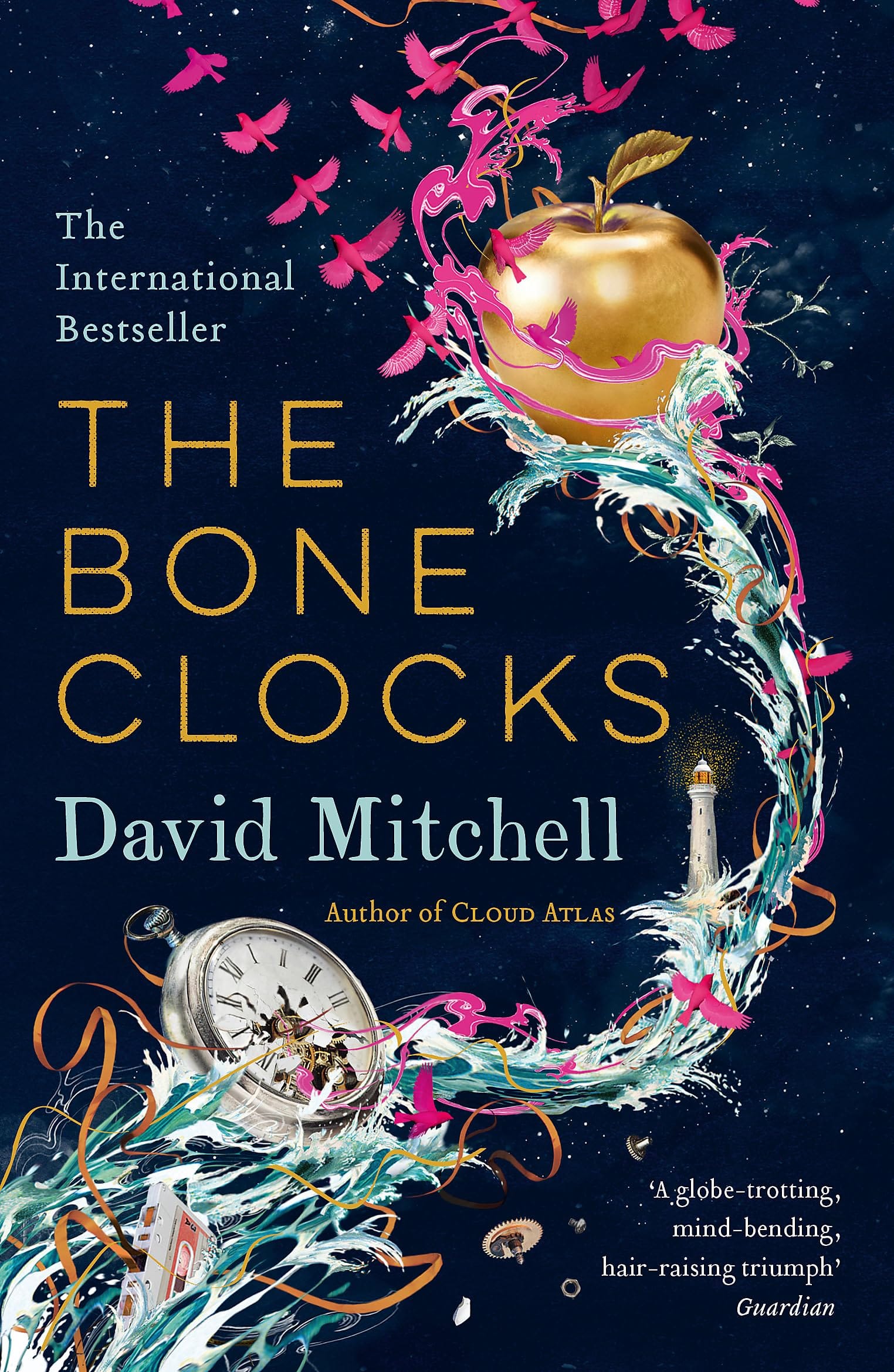
Still reading? Cool. So the final part of The Bone Clocks takes place after the Endarkenment - a collapse brought on by climate change, resource depletion, and the breakdown of global infrastructure. Up to that point, so for more than five-sixths of the book, there has been nothing about climate change. It’s a brilliantly-plotted book which gets you completely invested in the characters and their world. The last part hit me like a ton of bricks - maybe because the world I’d become invested in is so fantastical that I just wasn’t expecting a ‘real’ threat like climate change to play such a role in what happens to the characters. It works because it isn’t a ‘climate change artwork’. The vision it offers is a bleak one but somehow, because it isn’t yelling ‘this is about climate change, why aren’t you doing anything?’ it doesn’t quite trigger the fear shutdown that other climate dystopias provoke - in me at least.
I’m including this as one of my five moments because it made me think about the way that art can normalise climate change - in a good way. I suppose this was also a period when it felt like everyone in the arts and climate space felt that a climate change storyline on Eastenders was the holy grail. By 2016, it felt like we were entering the current era of polarisation - the Brexit referendum in the UK and election of Trump in the US had created massive bitter faultlines through countries and families. Climate change was so often still presented as a polarised ‘is it/ isn’t it’ debate. It hadn’t gone fully mainstream yet and there was still the sense that some people didn’t believe it was happening. So - the argument went - we need to get it into mass consumed entertainment, not as an ‘is it happening?’ story, but as the normalised backdrop to something else. Reposition it.
I’ve no idea what David Mitchell intended with The Bone Clocks but for me, it was a moment to think about how climate change is positioned within an artwork. Should it become something we expect to see almost everywhere, like gravity or the seismic impact of romantic love? Does making it the backdrop underplay its severity or mean that more and different people will have the chance to consider its impacts? Is all this just a way to avoid making work directly about climate change because I can’t actually cope with contemplating its awfulness day in, day out? I don’t think even nearly a decade on I have clear answers to these questions but this was definitely the beginning of starting to think consciously about them.
4. 2019
2019 is widely regarded as the year that climate change went mainstream. Increased scientific warnings, polling data showing that a majority of people believed it was real, high-profile activism from Greta Thunberg and Extinction Rebellion, many many extreme weather events, widespread media coverage of the escalating crisis not just in the ‘environment’ slot.
Earlier this year, for a freelance gig, I interviewed a range of arts leaders who’d been working with an awareness of climate change ‘since before it was fashionable’, as one of them characterised it. Multiple people spoke to me of the conflicted emotions they felt when everyone suddenly joined the party, rocking up with their reinvented wheels and naive programming. Yes, it was great that more people were aware, but it felt like lots of the conversations had reset back to square one. It was hard to show the level of generosity I felt I should.
Maybe I was jealous because I wasn’t part of a cool club any more. I was definitely worried about people not making the ‘right’ kind of climate art - which was partly arrogance and partly concern about how the arts can talk down to people and make them feel stupid (fast forward to 2025 when far right populists are trying to paint climate change as a concern of the metropolitan elite: this concern has only intensified).
5. Nature is over there
2022. We went on a residency on the Isle of Mull. We came up with a bunch of different projects which could happen. One of them is Invasive Species, an audio walk through a particularly beautiful area of the island. It uses the contested idea of the invasive species to ask what belongs where, and to probe how humans conceptualise their relationship with nature. Many visitors go to Mull for the unspoilt natural beauty, but this initial impression conceals some more complicated interactions between humans and nature. The theatre there commissioned us to finish the project, a gentle way for nature-loving visitors to the island to reflect on their relationship with what is around them.
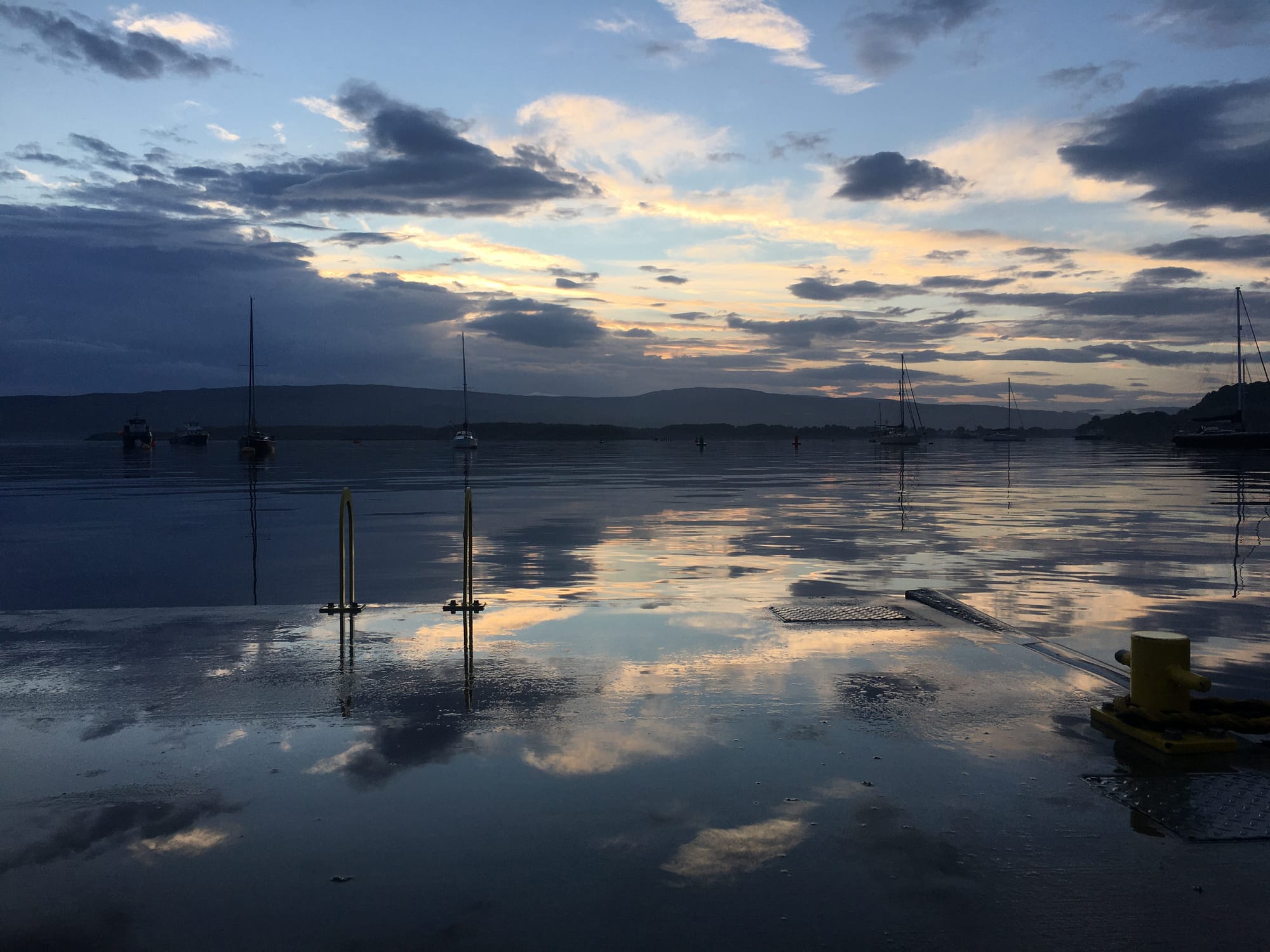
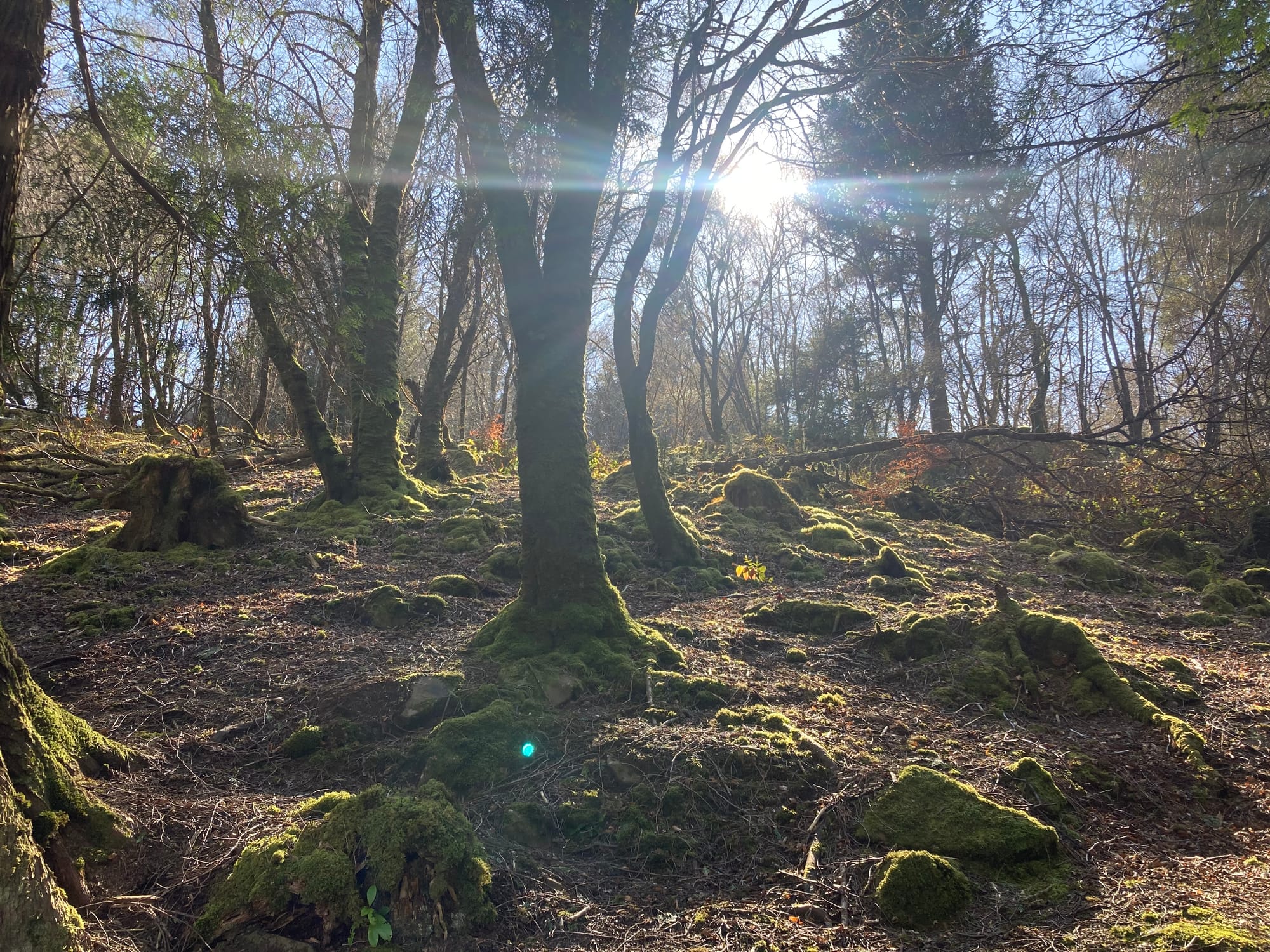
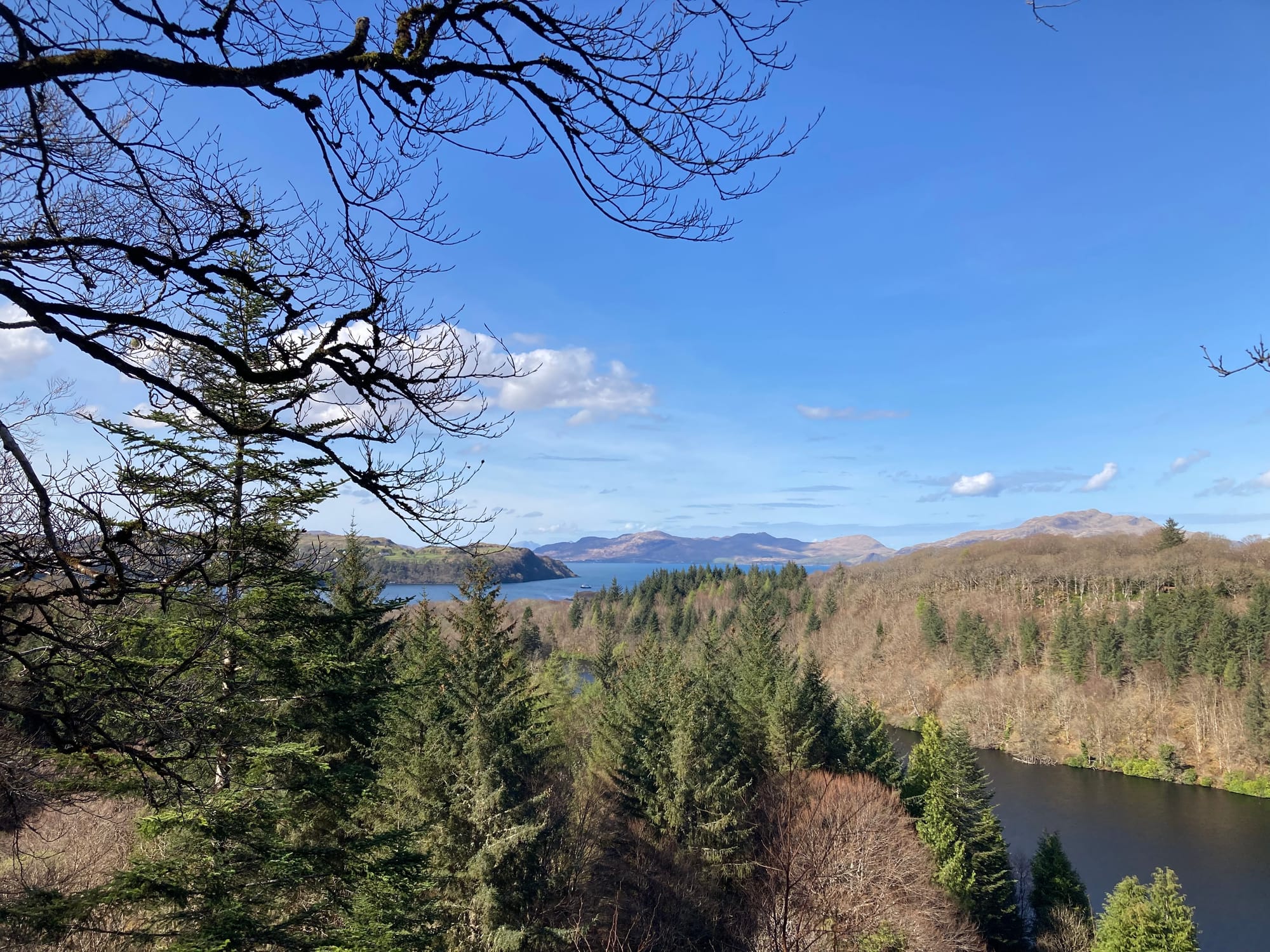
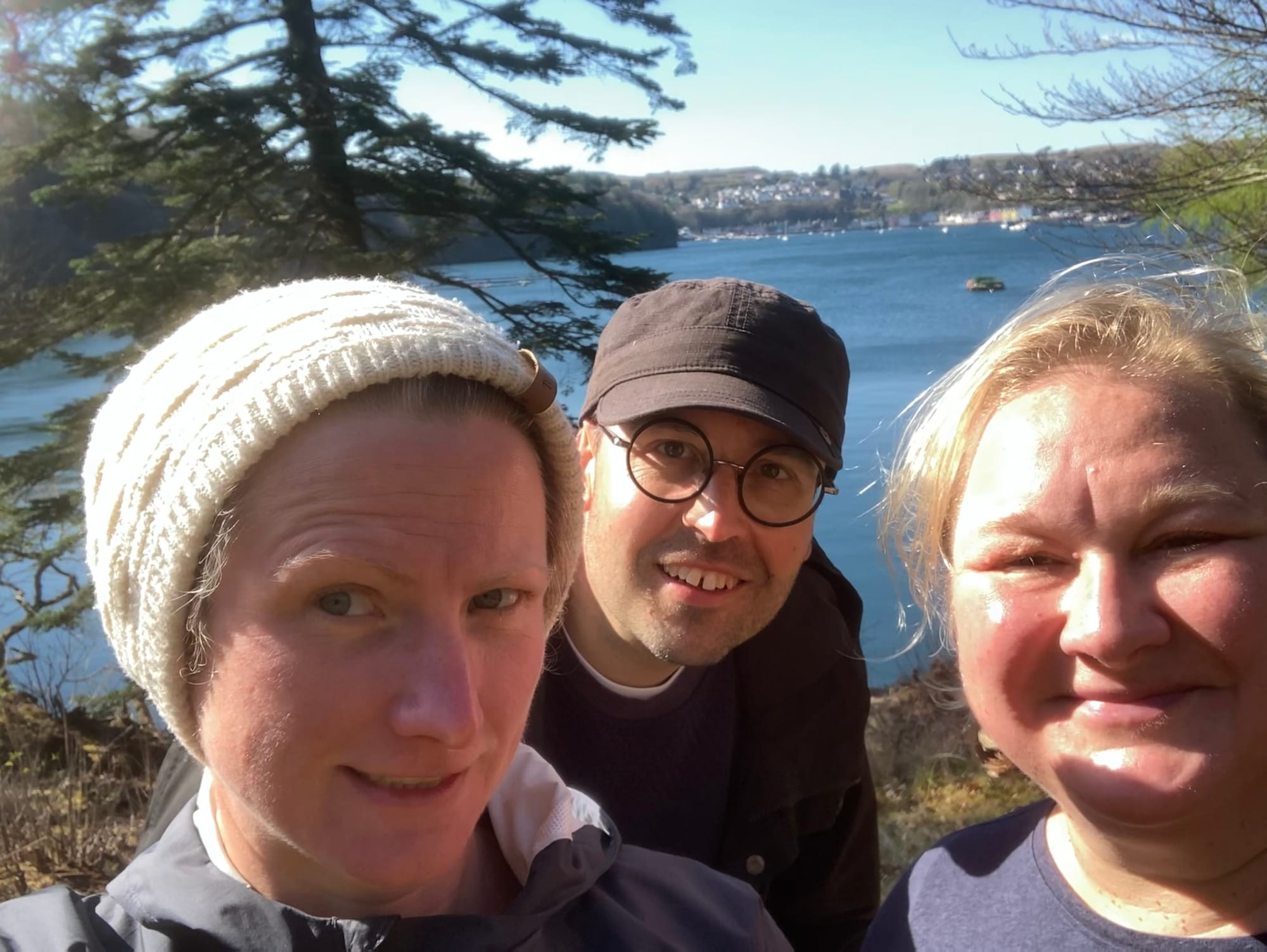
Sometimes it just sucks to be on residency.
It wasn’t a piece of climate art at this point. We’d given up making them. I’m so done with narratives that play into the carbon footprint/ individual guilt narratives that oil companies have been so successful in mainstreaming, and it’s very hard to make good art about systems change. FF had been making tools for people to practice different policy responses to the climate crisis, but we didn’t see any point in making art about climate change. I didn’t feel like I had a way of thinking about it that gave me anything new or useful to say. We parked the Isle of Mull piece over the winter with plans to finish it in 2023.
In 2023 we were commissioned to make a digital interactive for Manchester Museum’s new Wild Exhibition. The curators told me about a system that had underpinned their thinking about the exhibition: The Nature Futures Framework (NFF). Developed by the Intergovernmental Science-Policy Platform on Biodiversity and Ecosystem Services, it offers a tool which celebrates the complex relationships people have with nature. Within this framework there are three perspectives: Nature for Nature (valuing nature for what it is, and protecting it from humans), Nature for Society (valuing nature for the benefits it provides us, from medicine to the economic benefits of tourism) and Nature for Culture (valuing people and nature existing happily together) NB. The NFF isn’t about categorising people - it actually aims to bridge divisions on the best approach to climate action, and indeed, people rarely only agree with one perspective.
I realised that the way of thinking that underpins most visits to Mull draws heavily on the Nature for Nature perspective. People go there to spend time in pure unspoilt nature, away from other humans.
By extension, nature isn’t a place where humans live. Rather, it’s a place to be protected from humans because we can’t be trusted not to wreck it. The Nature for Nature viewpoint draws on philosophies like E. O. Wilson’s Half Earth theory, which proposes that half of the Earth's surface should be designated a human-free natural reserve to preserve biodiversity. And it's understandable why this position has its supporters - humans and their extractive practices have done untold damage to the planet. But it also raises some uncomfortable questions. What should happen to the humans currently living on the 50% of the Earth’s surface which is going to become this nature reserve. Will they be moved? Where to? Who is going to welcome them? While protecting nature from humans initially seems like a good idea, when you start to think it through, you realise how many difficult (or unconscionable) decisions it would entail.
Conversely, the Nature for Culture perspective sees humans and nature as existing together, in harmony. Not surprisingly, it draws on lots of indigenous and First Nations knowledge and practices. It seems harder to think of examples of living in a ‘Nature as Culture’ way in the highly industrialised Global North. I struggled to think of any. What would living in harmony with nature even look like in a place like London, where nature isn’t overly apparent?
But these ideas gave me a framework to think through the later drafts of Invasive Species with. Without previously having a vocabulary for it, the piece is gently problematising the Nature for Nature perspective and asking how our behaviour would change if we could find ways to embody Nature as Culture. Without actually using those terms. And it is 100% a climate change artwork, because -put simply- we wouldn’t be trashing nature and the planet so badly if we could conceptualise it as part of us and not ‘something over there.’ That way of experiencing the world isn’t confined just to individual actions or to policy change, it encompasses everything. Which is maybe what my frustrated brain needed.
After the rewrites, (Invasive Species will launch in May 2026) I kept thinking about these ideas. It’s all very well to think we should be aspiring to Nature as Culture but in a future that is actively dealing with climate change, we can’t all have little farms where we adopt indigenously-inspired practices. In fact, more of us will need to live in cities. Contrary to what one might initially think, people living in cities have less of an environmental impact than people in non-urban areas. Cities are more densely populated. Denser housing is more energy-efficient. People need to travel less far to reach what they need, which makes it easier to walk or cycle - or take public transport which tends to be more available in built-up areas. But how can we resolve this with living through Nature as Culture? Cities are so far from nature…. Aren’t they?
This feels like a question we want to spend more time with. It was relatively easy making a piece about our relationship with nature when on a sparsely populated Hebridean island. But only visitors to Mull will experience Invasive Species and -perhaps more importantly- only thinking about nature when you’re in a place that you regard as Nature is kind of playing into the human/ nature divide. So here goes a new phase of exploring whether cities need to be ‘unnatural’, what it would change if we didn’t regard ourselves as separate from nature, and ultimately what it would mean to embody Nature as Culture when you live surrounded by concrete.

